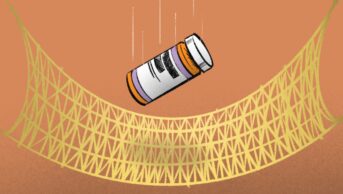
Shutterstock
Pictogram warning labels for drugs used to manage anxiety and insomnia do not reduce the risk of patients being responsible for a motor crash in the long term, a French study has found[1]
.
France’s colour-coded warning labels, which feature on the outer packaging of any medicines deemed to affect driving ability, were first implemented by pharmaceutical companies in 2006. The system uses three colour codes accompanied by driving advice to indicate escalating risk: yellow and orange advises the user to ‘be careful’ and ‘be very careful’, respectively. The red labels warn: ‘Danger: do not drive.’
To measure the labelling system’s success, researchers used three French national databases – the national health care insurance database, police reports, and the national police database of injurious crashes – to identify drivers involved in injurious crashes in France between July 2005 and December 2011.
“We estimated that medicinal drug consumption is responsible for around 3% of road traffic crashes,” says lead researcher Ludivine Orriols from the University of Bordeaux.
The crashes were allocated to four specific time periods: July 2005 to December 2006, before the pictogram had been implemented; January 2007 to May 2008, the period immediately after the system was introduced; and June 2008 to December 2009, and January 2010 to December 2011, to assess the longer term impact of the pictogram.
Drivers’ use of three classes of drug – benzodiazepine anxiolytics, benzodiazepine hypnotics, and z-hypnotics – was then assessed. The researchers, who published their findings in the British Journal of Pharmacology (online, 21 August 2016), chose these drug classes because of the consistent evidence for their causal association with the risk of road traffic crashes.
The study revealed that 69,353 responsible and 73,410 non-responsible drivers were involved in an injurious crash during the study period.
Use of benzodiazepine anxiolytics was associated with a 42% increased likelihood of being responsible for a road traffic crash before the pictogram was introduced. This increased risk fell dramatically to 8% immediately after the pictogram was implemented. But the risk became significant again – between June 2008 and December 2009, use of benzodiazepine anxiolytics was associated with a 19% greater likelihood of being responsible for a crash, and in the following two years it was 35% greater (January 2010 to December 2011).
A similar trend was seen for benzodiazepine hypnotics, although the results were not significant because so few participants had taken the drugs.
Crash statistics worsened for users of z-hypnotics over the study period. Before the pictogram was introduced there was no increased risk of being responsible for a crash for those taking the drugs, but immediately after the system’s implementation there was an increased risk of 24%, which rose to 32% after the initiative had been in place for 18 months.
Based on their findings, the researchers recommend: “Prevention policies relating to the general driving population, but also to healthcare professionals including general practitioners and pharmacists, should be reviewed. Long-term educational measures should be preferred and should specifically target benzodiazepines and related drugs, as these account for the largest share of the attributable fraction.”
Theo Raynor, professor of pharmacy practice at the University of Leeds, whose research interests include the effective provision of consumer medicines information, says he is not surprised by the findings because the study had made three inappropriate assumptions – that people taking the medicine had noticed the pictogram, had understood the information it depicted and acted on it.
There are currently no plans to introduce a similar system in the UK, he adds. “My advice to the [UK drug safety regulator] would be, and has been, that we need more evidence. It’s a big effort for manufacturers to put [pictogram labels] on packs and they take up valuable space, so we need to be sure that what we are doing is effective.
“If a pictogram was a drug there is no way it would get a licence as there really is no evidence that such pictograms work.”
References
[1] Orriols L, Luxcey A, Contrand B et al . Road traffic crash risk associated with benzodiazepine and z-hypnotic use after implementation of a colour-graded pictogram: a responsibility study. British Journal of Clinical Pharmacology 2016. doi: 10.1111/bcp.13075


